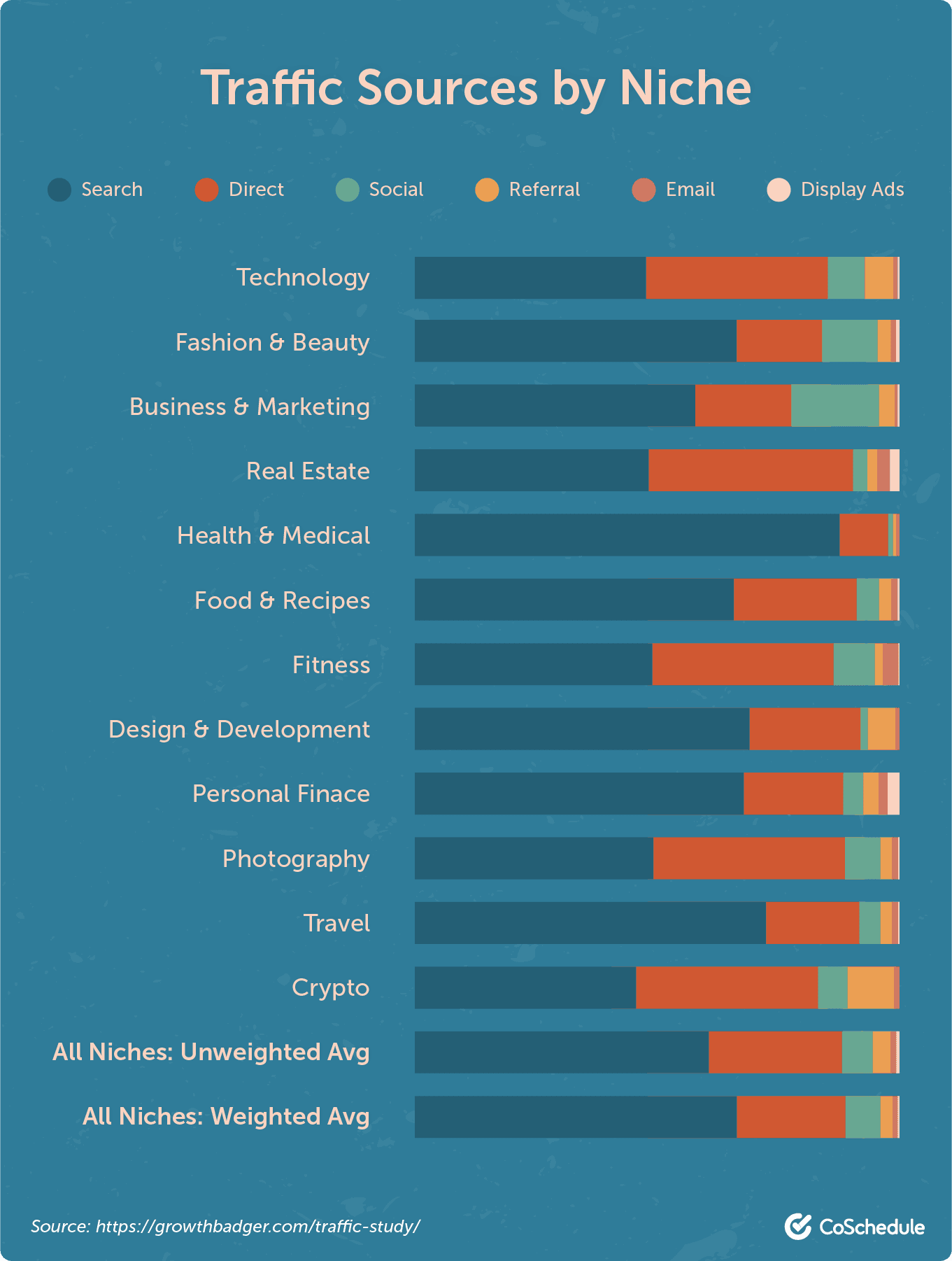Advertisements are everywhere.
From display ads to non-skippable ads on YouTube and influencers with #spon on Instagram, ads are becoming harder and harder to avoid.
With new research showing that Millennials don’t respond to ads, what’s a business to do?
The answer is simple: content marketing.
If you roll your eyes every time you hear the phrase, “Content is king”, or you’re still on the fence about the actual benefits of content creation, you’re in the right place.
In today’s post, you’re going to learn how the benefits of content marketing can help you cut through all that advertising noise, and speak directly to your ideal client — who is primed to buy (no Facebook advertising budget required).
Recommended Reading: Content Marketing Examples: 31 Stellar Strategies and 16 Content Marketing Metrics: A Guide To Adopt Successful KPIs
1) Content Marketing and Google Are a Match Made in Heaven
Quality content = more traffic from organic searches.
The top search result gets 33% of traffic, which drops to 18% for the second search result and 12% for the third.
How do you rank higher? According to Matt Cutts, former head of webspam at Google, it all starts with creating great content.
What are the benefits of Google liking your content? Investing in content marketing will dramatically boost your website traffic from the number one traffic channel: organic search.
A study, from Growth Badger, found that Google sends 8x more traffic to websites than all other social media platforms combined, and it’s the #1 source of traffic for every single niche in the study:
2) Content Drives Website Traffic
Everyone wants more website traffic. Especially traffic to their highest-converting pages.
But your highest-converting pages on your website might not be your highest traffic-generators. In this case, you may need content that generates more top-of-funnel interest (more on this in a bit) that you can use to funnel traffic down to your higher-converting pages.
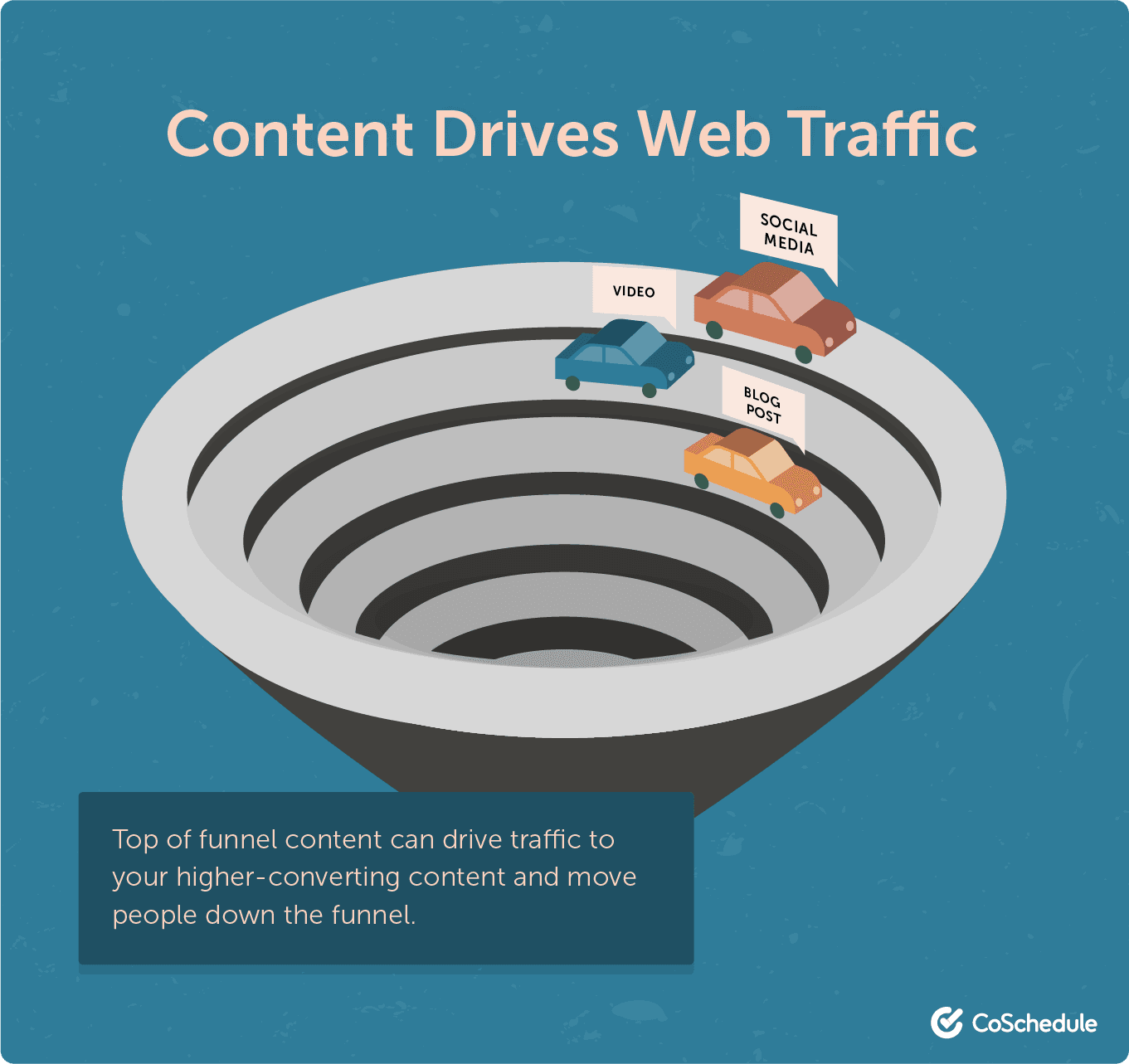
3) Solving Customer’s Problem With Your Solutions Helps Earn Trust
It is much easier to sell ANYTHING when your ideal customer is already looking for what you sell. Want to catch your customer in that research phase? Then you need to empower them with information and position your product or service as the best solution.
Content marketing is the best way to achieve this. It stops you from forcing your product or service on people with traditional advertising and positions you as a valuable resource.
Are you not convinced?
Let’s say you sell designer handbags. If someone walks into your store and only wants to spend $100 on a bag, the sale isn’t going to be easy, if it happens at all.
If you can talk to that person during the research stage and explain why designer bags are worth the investment and the importance of paying a premium price for a quality bag, you can change their minds about how much to spend on a bag.
The same goes if someone is searching for a solution to oily hair.
You can educate them on the common causes of an oily scalp, what ingredients to avoid in shampoo, and give a soft pitch to your clarifying shampoo.
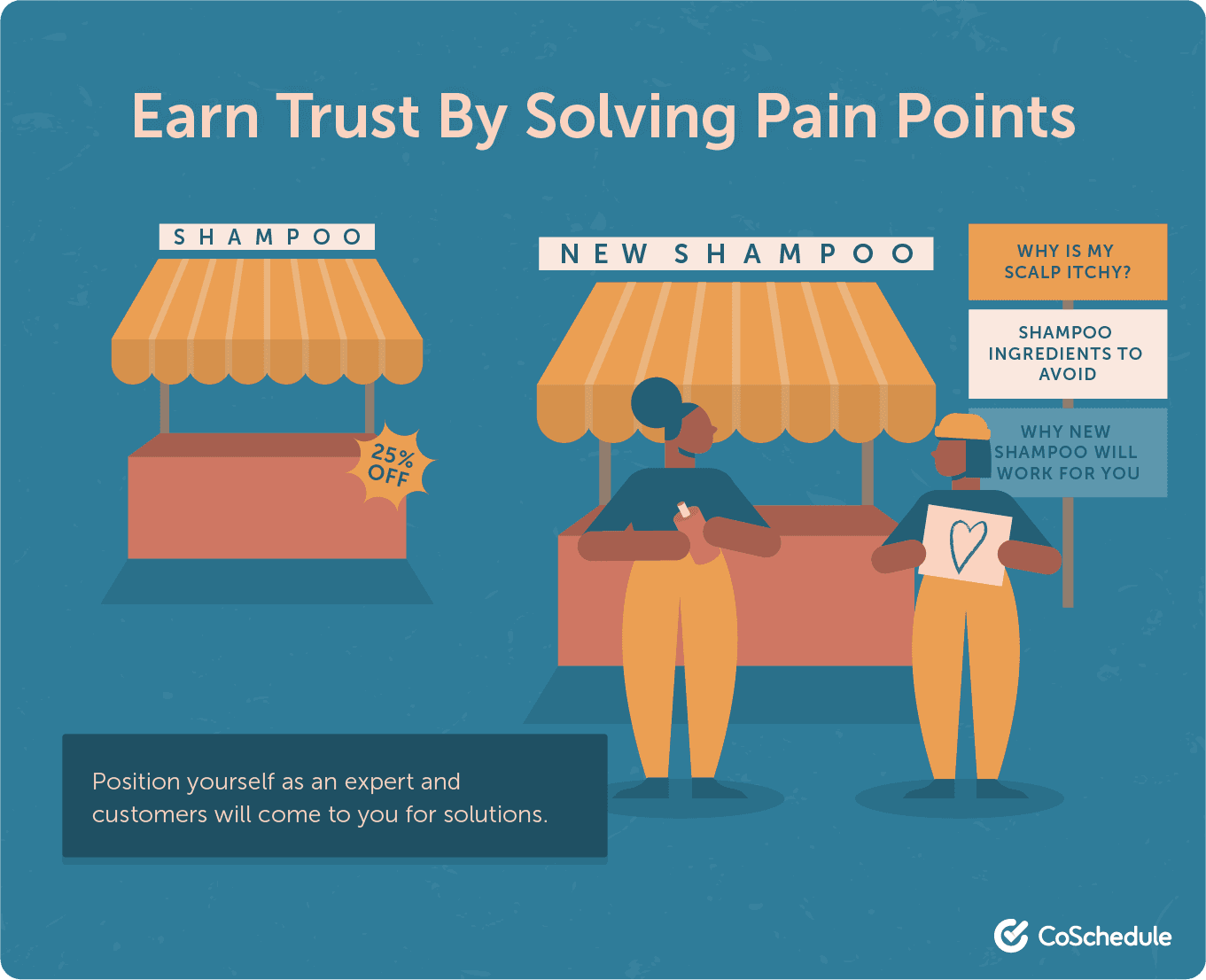
Even if that person has never heard of your brand before, by educating the consumer, you position yourself as an expert, by providing direct solutions to the customer’s problems.
4) Traditional Advertising is Annoying, and Content Marketing Has Higher ROI
When was the last time you willingly sat through a TV or YouTube ad? With more and more people switching channels, turning the sound off, or using ad blockers, there are better and more effective ways to spend your money.
Would you rather continuously interrupt people with TV commercials and banner ads, OR would you rather attract primed-to-buy customers to your website?
Unlike some other forms of marketing, content marketing helps you avoid that “annoying” label and be seen by your customers as a brand who helps them.
Content marketing costs way less than a 30-second TV commercial and can help you generate 88% and 67% more leads, and the good news doesn’t stop at leads.
Content drives conversions like crazy. On average, conversion rates are 6x higher for brands using content marketing than those who aren’t. Then there’s the fact that content has compounding ROI, meaning that site traffic steadily increases to your website over time, without you having to lift a finger.
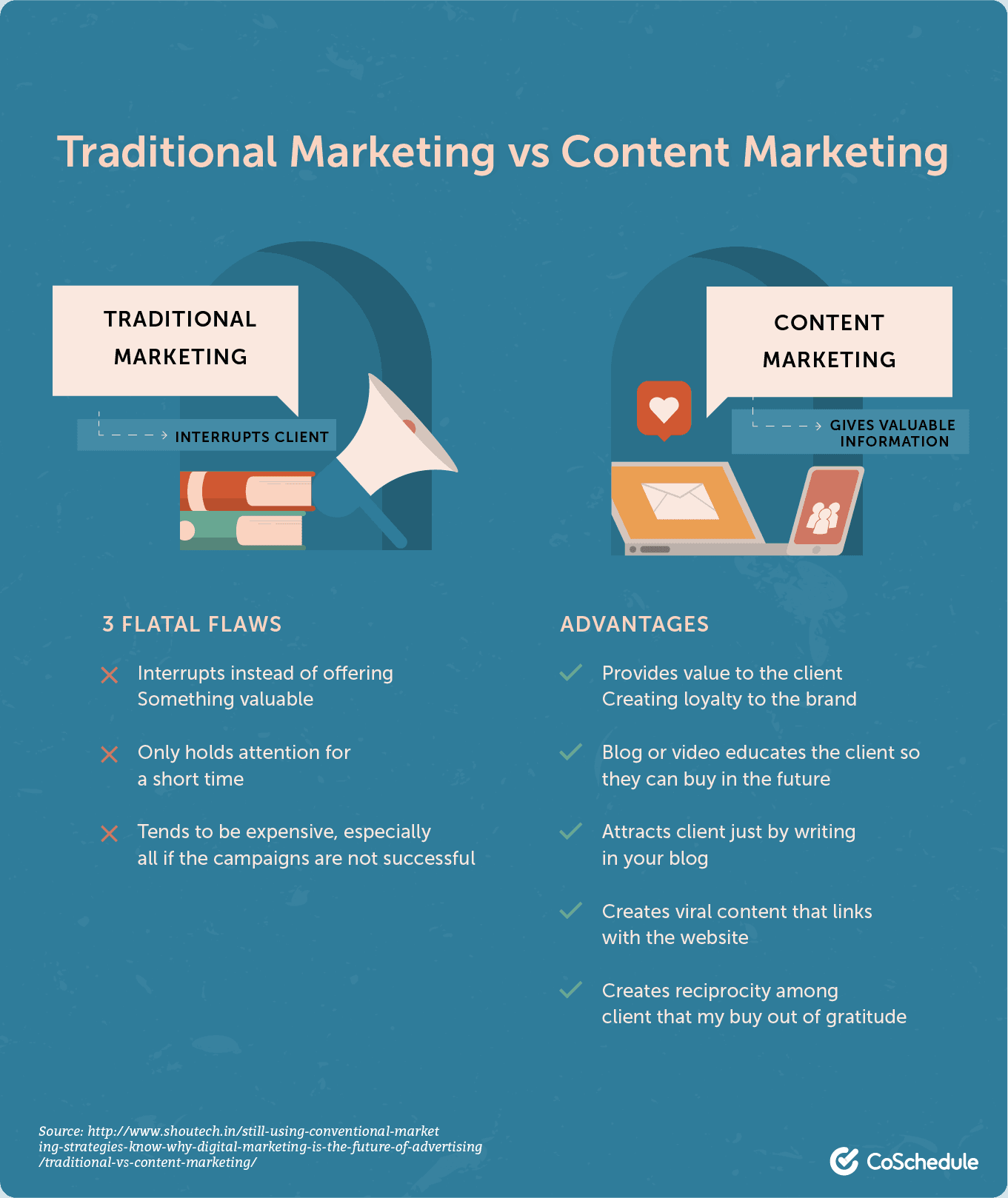
Turn your brilliant ideas into engaging articles with ease. Discover how our Article Generator can bring your content to life!
5) It Attracts Backlinks and Boosts Your SEO and Site Traffic
According to Joshua Hardwick on the Ahrefs Blog, “backlinks are arguably the most important ranking factor” for search engines. They play a significant role in helping Google and others determine which content is most authoritative, and better understand what webpages are about, based on which pages link to them and what anchor text they use.
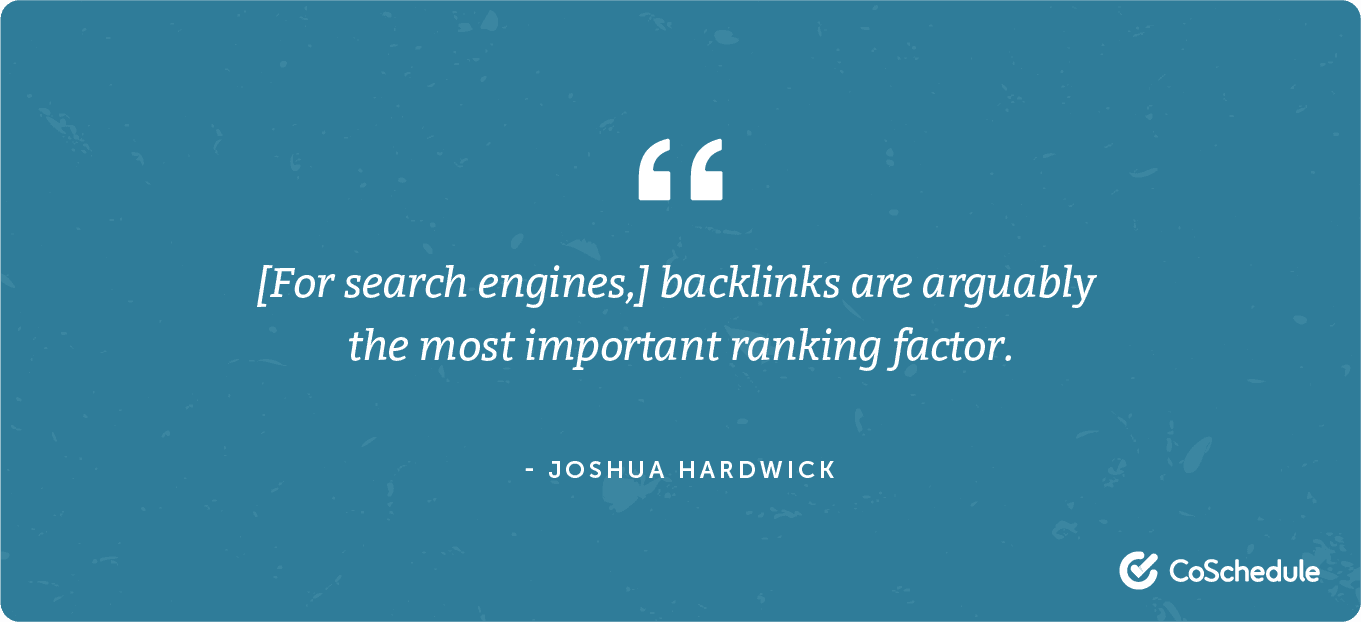
So, how do you earn more links?
Create content that people want to link and share. Then, promote that content.
Types of highly-linkable content include:
- Original research
- Survey results
- Infographics
- Expert roundups
- Content hubs
Earning links helps both your linked pages and your website as a whole rank higher and drive more traffic.
6) Solid Content Can Help Attract the Right Audience
The #1 question you need to ask yourself is:
“How beneficial is the content I’m creating for my audience?”
If it’s not helping your reader take ACTION, you’re not going to see results from your content marketing efforts.
When your content (i.e. blog posts, e-books, etc.) is informative, relevant, and actionable, it creates trust. If you combine this with a solid content marketing plan and approach your campaigns like strategic projects, your content game will shoot up.
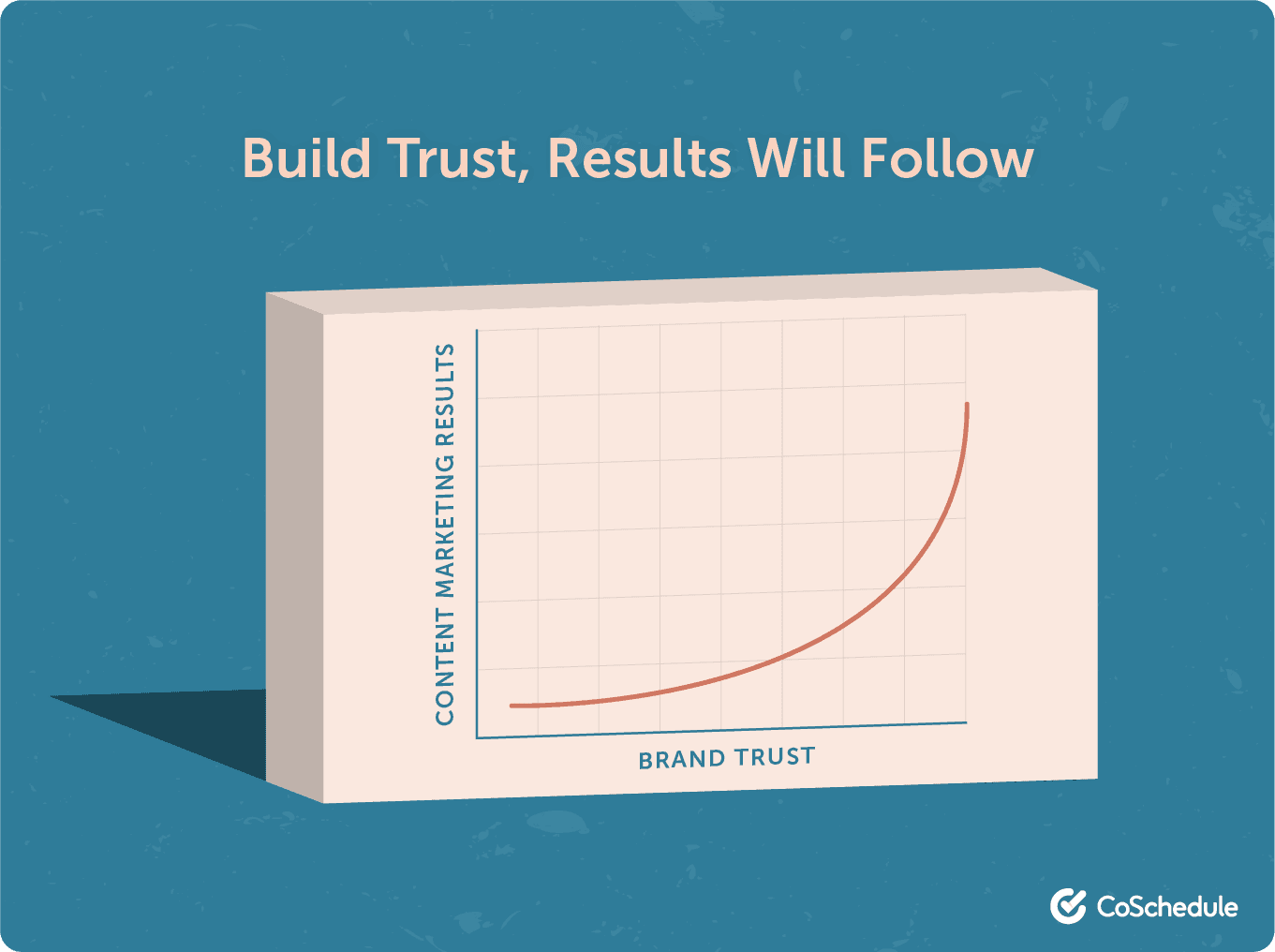
Your reader will see you as a valuable resource — the go-to brand for the problem you’re solving. Plus, an overwhelming 95% of buyers consider content as trustworthy when evaluating a company.
More importantly, your actionable content is going to make them curious about the results they can get from your paid content.
If someone can achieve something from following your advice, that’s going to make them think: “Wow! If their free stuff did this, imagine what their paid stuff can do!”
7) It Makes Life Easier for Your Customer Support Team
Do you know what’s annoying?
Replying to the same message. Every. Single. Day.
Don’t torture your customer support team like that. Not only is it a massive time-waster, but you’re missing out on empowering your customers to solve their own problems.
By creating a content marketing strategy that addresses your frequently asked questions, you can build a knowledge base, and reduce your support tickets by as much as 80%.
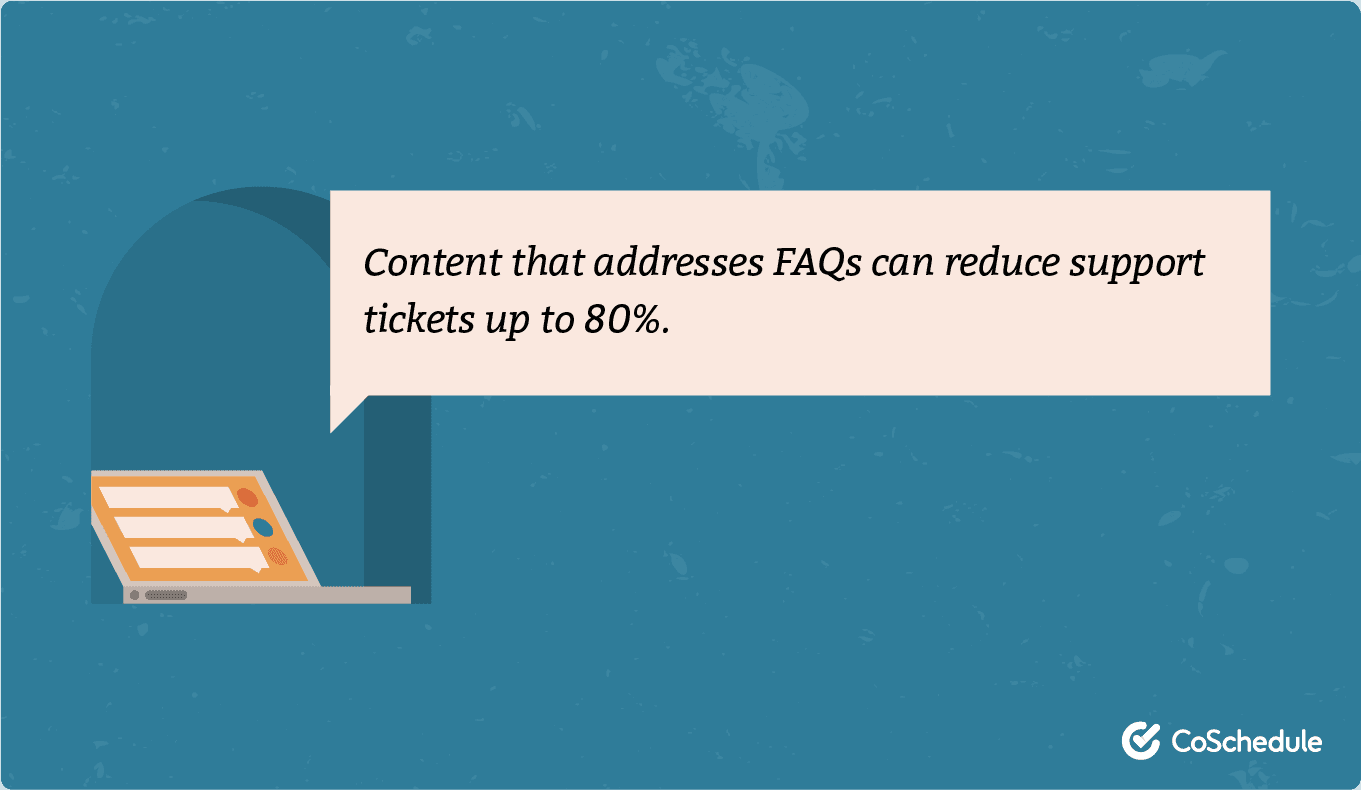
8) Content is Your Sales Team’s Secret Weapon
Reach out to your sales team and create a list of the common questions and concerns potential customers ask. Getting a hold of this data can help improve your content game drastically.
Once you’ve got your list, start building out these resources. It will help you address objections and overcome them, making your sales team’s job easier and improving your team’s productivity.
Plus, your content doesn’t need lunch breaks and can work for you 24/7.
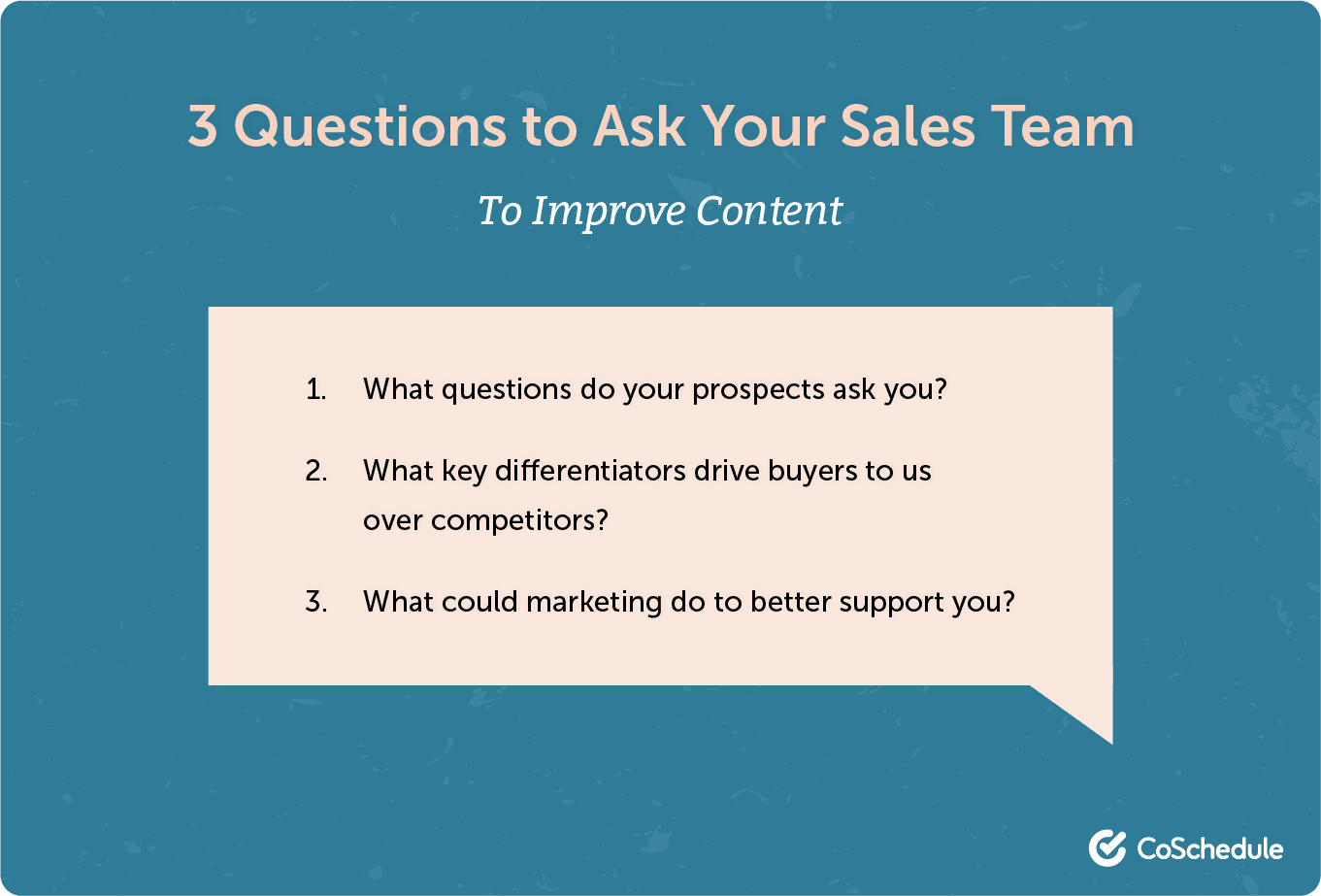
9) Content Drives Long-Term, Top-of-Funnel Traffic
What the heck is top-funnel content?
It’s the awareness stage. People have entered the market and are looking for answers, but aren’t necessarily looking for YOUR product yet.
Top-funnel content (aka ToFu at CoSchedule HQ) helps to quench that thirst for knowledge.
As Emma Tupa, Marketing Strategist, describes it:
“It’s kind of like when you meet someone for the first time; you want to be interesting enough but not tell your entire life story.”
With 81% of shoppers doing online research before making a purchase, you want to make sure you’re that information source.
What are the benefits of ToFu?
- It drives traffic to your website.
- Establishes your brand as an expert.
- Generates leads.
- Drives engagements.
What types of content work best for ToFu?
- Blog posts — you’re reading a sweet piece of ToFu content right now.
- E-books
- Infographics
- Webinars
- Email sequences
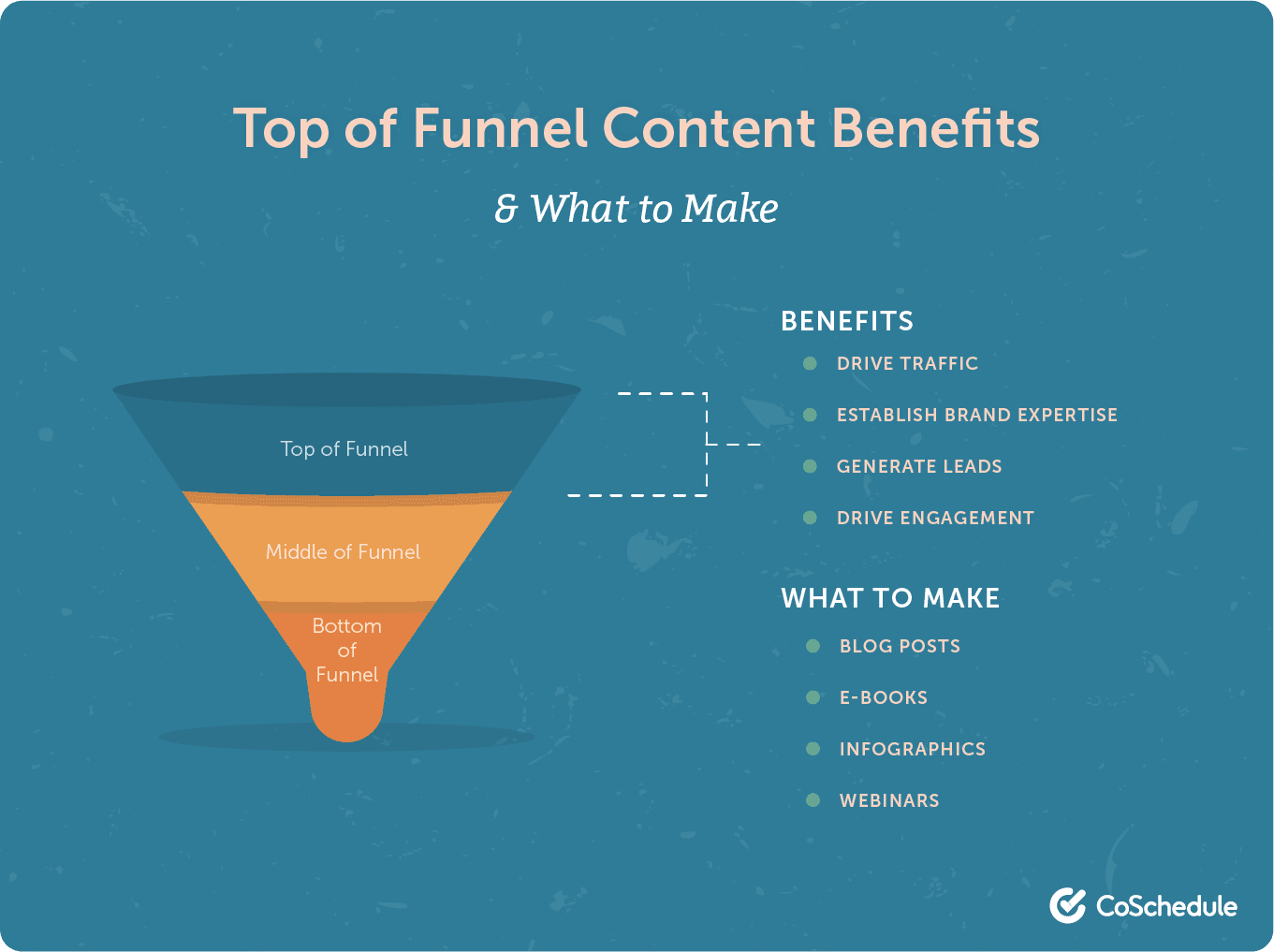
10) It Nurtures Prospects Down the Middle of Your Sales Funnel
Now that you’ve made your lead aware of the problem and gained their trust by flexing your expertise, it’s time to nurture them to the next stage of the funnel.
Middle funnel (MoFu) content helps your leads hunt down the best possible solution to their problem. Instead of letting them figure everything out on their own, you can swoop in and save the day (again) with a highly valuable piece of content.
What content works best for MoFu?
- Reviews, comparisons, and roundups
- Educational resources
- Case studies and white papers

11) It Converts Leads Into Customers at the Bottom of Your Funnel
Once your leads get to the bottom of your funnel (BoFu), it’s time to convert!
You’re no longer trying to create trust and educate your audience; your game plan is to turn all that attention you’ve built around your brand into sales.
If someone has stayed to the bottom, you know they are SERIOUS about purchasing your product. You need to create content that talks about the product, compares it to your competitors, and gives your audience all the information they need to make an informed decision.
What content should you create for your BoFu?
- Product Comparisons and Alternatives
- Product Tutorials and Updates
- Customer-influenced Content
- Industry trends and analysis
Which content formats work best for BoFu?
- PDFs and Downloadable Content
- Webinars and Video Training Courses
- Success Stories
- Free courses and education
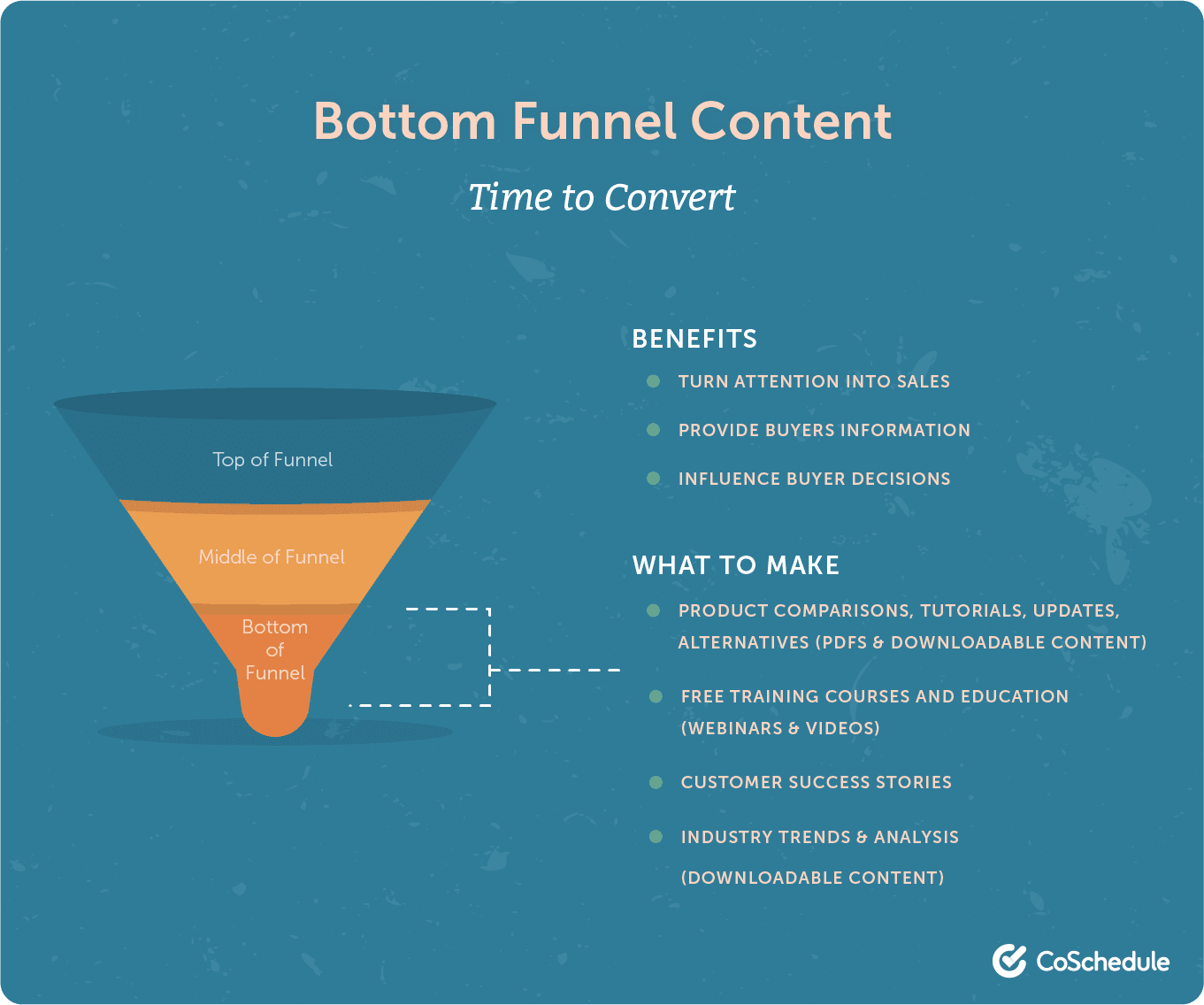
Now that you know about the benefits of top-, middle-, and bottom-funnel content, it’s a good idea to map out your existing content to each one. Here’s an easy-to-use content mapping template that will help you identify gaps, map out new content ideas, and stop any leaks.
12) Content Marketing Helps Attract Your 1000 True Fans
Kevin Kelly wrote a fantastic article, called 1000 True Fans.
In his article, he explains that you don’t need millions of followers, millions of dollars, or millions of customers to have a successful, thriving business.
You only need 1,000 true fans.
What is a true fan? It’s someone that has Justin-Bieber-fever for your brand — a person who will buy anything you produce and sing your praises to the world.
Where do you find these “true fans,” or a better question might be, how do these “true fans” find you?
Through your content marketing.
If you’re wowing your customers from the awareness stage all the way through to that first sale and beyond, you’re laying down the foundations to build a true fan.
Once a true fan is invested in your brand, that person will:
- Follow you on all your social media channels.
- Share your blog posts.
- Tell their friends and family about you.
- Keep buying from you (hello, recurring revenue).

13) Amplifies Your Brand Awareness
Imagine writing a blog post that ranks on the first page of Google for a keyword that 20,000 people search for each month. Your brand is now in front of 20,000 people looking for a solution to the exact problem you solve. That’s 240,000 people a year who have potentially never heard of your brand. That’s incredible and powerful brand awareness.
Inside that blog post, you probably have keyword variants, if you’ve done your research, and those phrases will also end up ranking — giving you even MORE exposure.
All of this from writing a single blog post. Imagine the brand awareness you could generate from a consistent blogging strategy of four blog posts per month.

14) Content Marketing Pays Off for the Long Haul
When you pay for advertising, it can keep a viewer’s attention for a brief moment. Then, the value dissipates. However, a single piece of content can generate traffic and viewers for months, or even years. A simple TV spot or print ad could never hope to earn that kind of attention.
Here’s a look at the traffic for one post on the CoSchedule Blog over an approximately three-year span:

That’s a ton of traffic all from one blog post. This piece hasn’t been updated in that space of time either (although updating your old content is a good practice to follow). That’s an awesome amount of top-of-funnel awareness generated by one post that took less than a week to produce.
Now, multiply those results times dozens (and eventually hundreds) of pieces of content. The potential for compound benefits is extremely high, and maybe even unmatched by any other marketing practice in your toolbox.
15) Content Assets Can Be Reused and Repurposed
Content assets, however, can be reused and repurposed into other formats where they can continue to create more value.
Repurposing content also makes it easier to be present where your customers are at online. All while spending less money than you would on an ad budget.
Here are some ideas for how you can repurpose a single blog post:
- Add graphics that can be reused on social media and in other content.
- Create a Twitter thread that highlights the main points.
- Borrow copy to use in your email marketing.
- Serve as the basis for a video script, podcast episode, or webinar.
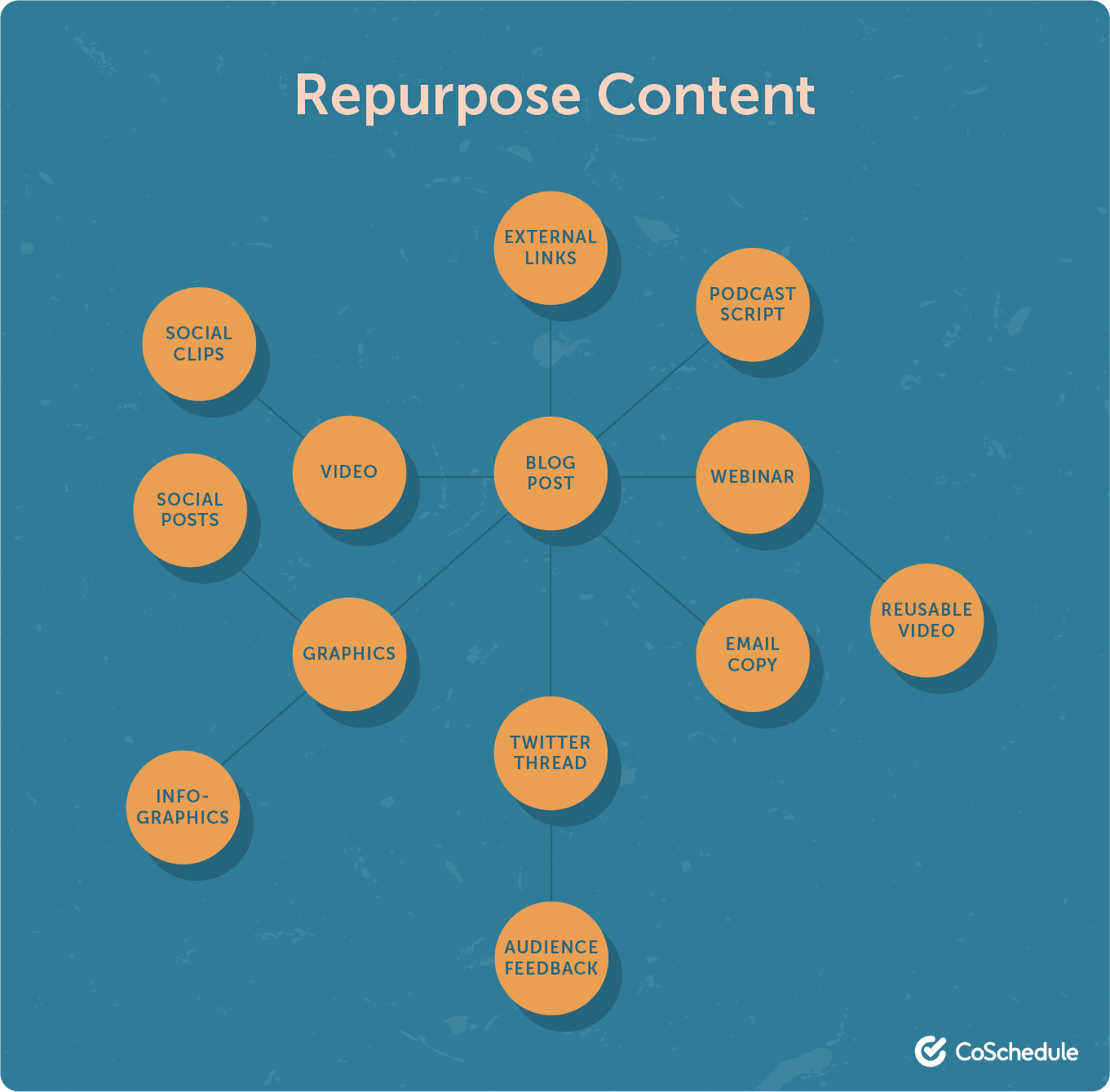
You might even get creative and find tons more ways to reuse your content and maximize your investment.
16) Content Marketing Helps You Stand Out From Your Competitors
Once you’ve built up a strong content marketing machine, it can become difficult for competitors to catch up. Sure, it takes time and commitment. But the rewards are there for brands willing to put in the work.
Even if competitors can copy your content, they cannot copy your work ethic, your voice, and your unique perspective. This can make content marketing a powerful differentiator that separates the most trusted brands from those seen as commodities.
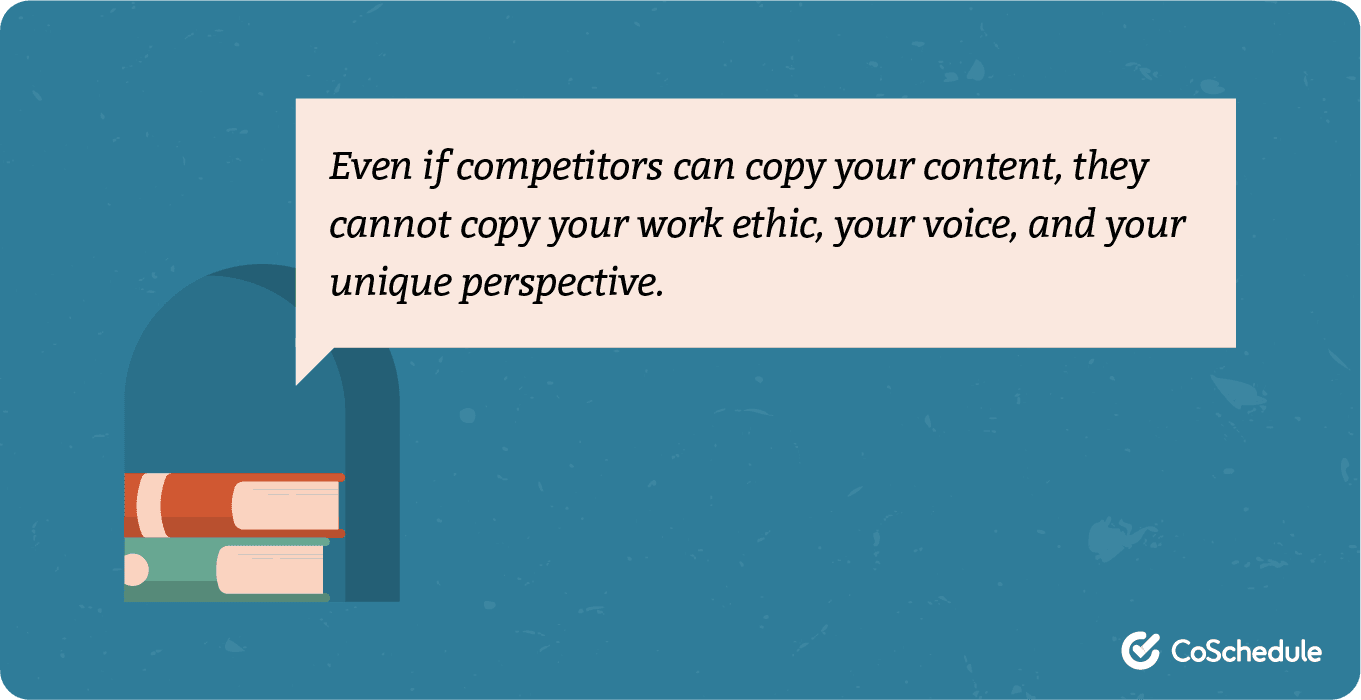
17) Content Marketing Can Help You Learn More About Your Potential Customers
Knowing your target audience is the one of the most basic pieces of content marketing advice that everyone has heard a thousand times. There’s a good reason for that (because it’s important and surprisingly easy to overlook), but it’s not exactly a groundbreaking tip.
But creating and analyzing content, over time, can also teach you things about your audience. You can learn what they’re really interested in, which pressing problems they have but perhaps don’t know how to vocalize, and all kinds of other useful information that can help you create more valuable content and craft better brand messaging.
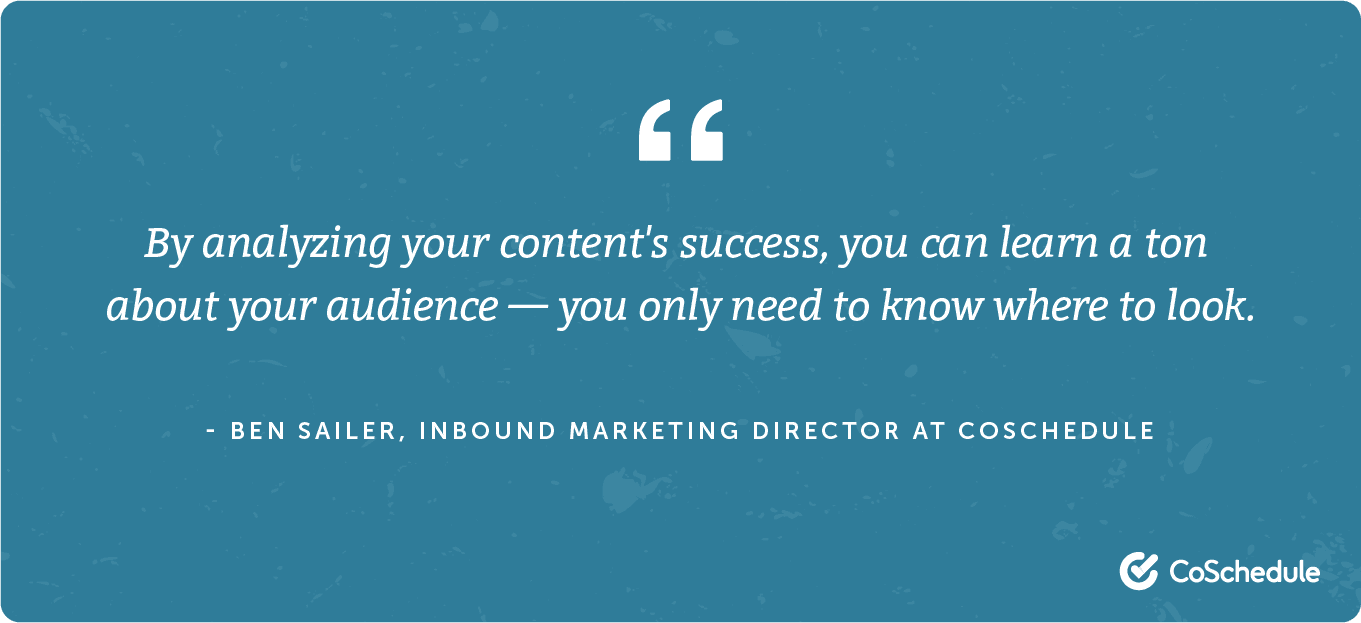
18) It’s Effective in Every Industry
Content marketing can work for your business, almost no matter what kind of business you work for.
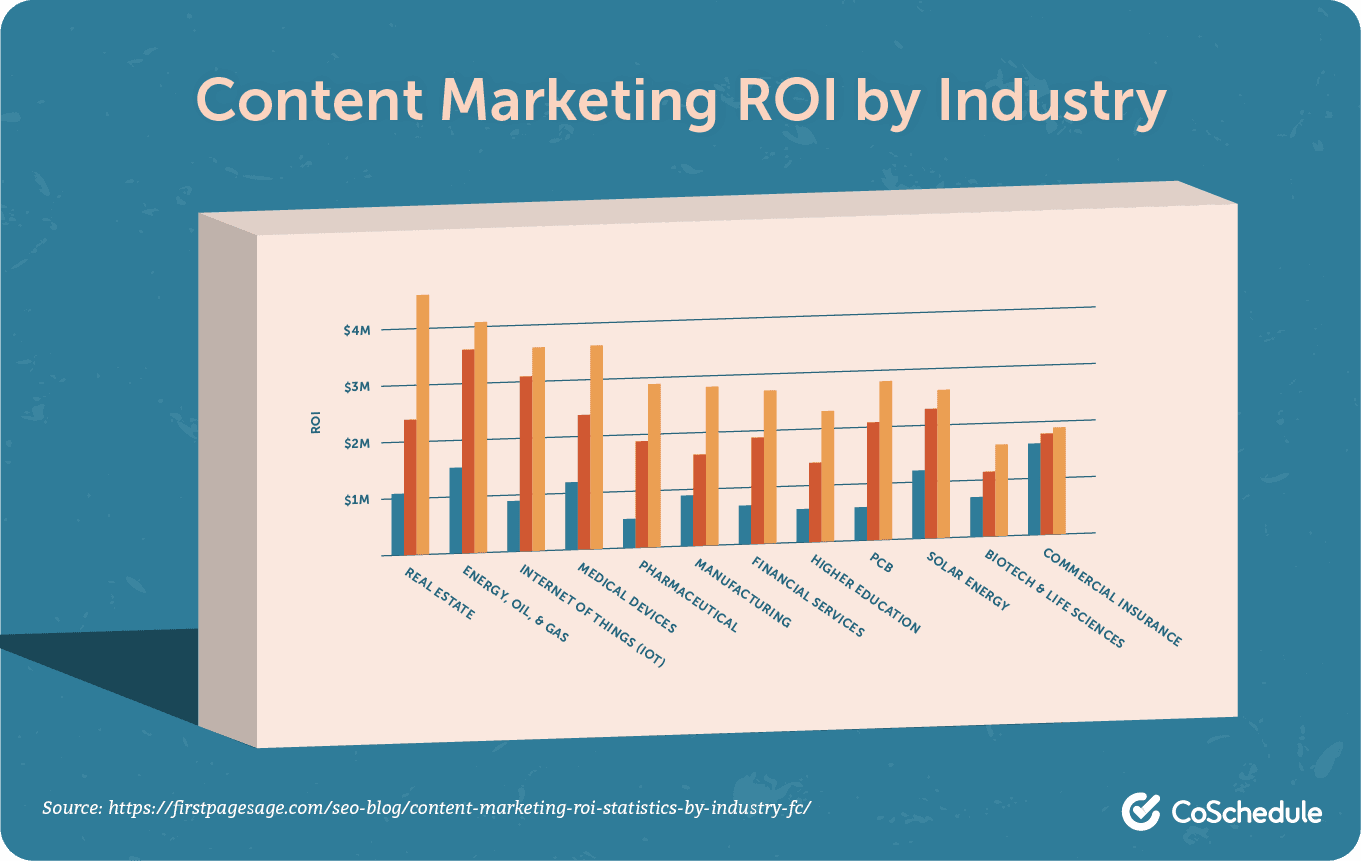
Pros
- Strong alternative to advertising: In contrast to a one-off advertisement, content marketing continuously delivers valuable information to consumers. For example, if a prospect is seeking more information, an eBook or cheat sheet is a beneficial resource.
- Compounding ROI: While content marketing is certainly a long-term investment, content marketers, on average, receive 6x higher conversion rates than non-adopters. Additionally, content marketing has a compound effect – the more content published, the more potent that content becomes, offering a higher return on investment.
- Boost SEO: On-page content is the most effective SEO technique. And by regularly publishing quality content – centered around valuable keywords – content will rank higher on search engine pages.
Cons
- It’s an ongoing (and somewhat time-consuming) practice: A robust content marketing strategy requires substantial diligence. Your efforts may fall short if you cannot allocate the time, resources, or qualified individuals.
- It’s an investment, not a quick fix: On average, content marketing takes three to nine months before bringing in a steady stream of traffic and revenue. Great content will impact consumers, but it will likely take time to see results. Don’t be discouraged, though – stick with the fight!
- Difficult to measure: Without an established process for benchmarking, result tracking, and data analysis, it’s difficult to understand the successes and failures of your content strategy.
Not sure who is involved in making a content marketing strategy a success? Read an overview of marketing roles, responsibilities, and skills here.
Start Building Business With Content
While content marketing is not without its disadvantages, once the groundwork is laid, growth becomes exponential.
So, what do you need to do to reap the benefits of content marketing?
Take action.
Write that blog post. Film that YouTube video. Create that infographic. Your ideal customers are out there right now, waiting to find you.
It’s never too late to start.
Mark Quadros and Ben Sailer contributed to this page.

